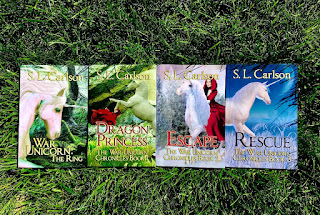How many of the following products can you recognize?
1. 1. You’ll
wonder where the yellow went…
2. 2. Wake
up to _____ in your cup.
3. 3. They’re
magically delicious.
4. 4. Plop,
plop, fizz, fizz…
5. 5. I
wish I was an __________.
6. 6. Double
your pleasure, double your fun…
When television advertisers created jingles, they
discovered a very important fact. Jingles were catchy, short songs easily
remembered and repeated by children. Thus for every time a jingle played on TV,
children would repeat it and basically gain the product “free” advertising. If
you completed the six examples above, did you sing the jingle as you tried to
finish it? Uh-hum. J
Another way companies brand their product is by
developing a spokesperson who is in all their ads. Recognize these? Is it
possible to say their name without adding the company they’re associated with?
Companies also get you invested in their products by
having celebrities in their commercials. State Farm is one of the best known to me as they use several football icons in their commercials. And if you’re a football
fan, you think “if it’s good enough for them maybe I should take a look.”
Back in 1967, I did a term paper on subliminal
advertising*, the art of projecting indiscernible objects onto a movie or
television screen to see if people watching would be influenced by that projection.
For example, a small picture of a popcorn box was put into the top corner of
the movie screen – flashed for only a tenth of a second – and statistics were
kept as to whether popcorn sales increased. Keep in mind sight is only one of
our senses; therefore advertisers can bombard us in any number of ways. Think
of the last time you walked through a mall (I realize that was a really long
time ago) and you smelled caramel popcorn or the rich aroma of roasted coffee.
How easily your feet moved you in that direction. * What
Is Subliminal Advertising? Definition, Types & More - ShareThis
I find this subject fascinating although I know
there can be far reaching effects from such “brainwashing”. You need to be
aware that suggestions are being made to you not only with actual commercials
(which we tend to walk away from to get our lunch or use the restroom) but
within the program itself. For those familiar with the movie “E.T.”, remember what
candy became an overnight sensation when the movie came out? Hershey agreed to spend $1 million promoting E.T. in exchange for the rights to use E.T.
in its ads. The payoff was huge—the little peanut butter candies saw a reported
65% to 85% jump in profits just two weeks after the movie's premiere.
The examples, of
course, are everywhere, but I started thinking about how much closer to home
such things were as a writer. Without consciously thinking about it, my heroine
asks for a Kleenex when she sneezes; the hero opens the door of his F-150 pick
up to take her to the local pizza joint where they have cokes and wood fire
pizza. I am certainly not getting paid to use brand names in my writing (wouldn’t
that be nice) but do I have to be concerned about saying “coke” instead of “soda”?
In some cases, the need to use a brand name helps distinguish and define the
people in the story. For example, the hero putting on a North Face jacket tells you he has good
(and more expensive) taste and enjoys outside activities. Naming a premium wine
choice at the restaurant is similar.
Rights
of Writers: Can I Mention Brand Name Products in My Fiction? Is an excellent article by Mark
Fowler about the four basic types of brand/trademark problems in writing, with
examples of each, but his bottom line is, “The use of brand names in fiction is
not a sleep-depriving issue. It would be obsessive (and stylistically
unpalatable) to use the R-in-a-circle symbol or the TM symbol every time you
refer to a brand name in your text. And, as long as you do not write
falsely and disparagingly about real brands and the companies who manufacture
them, you are unlikely ever to run into a problem.”
I had the delight
of sharing some of this discussion with my characters, JC and Charlie in “Loving
Charlie Forever”, a time travel. They were trying to figure out what they could
“invent” back in 1850s to support themselves, but were having a bit of an integrity
crisis worrying about taking away another’s invention before its time. I’ve
always liked writing time travels because of the knowledge that some characters
have given they’re from the future. Usually though, they don’t have the wherewithal
to invent a particular item. And afterall, what fun would that be for the real
inventors?
In your reading,
and perhaps your writing, you’re likely to run across brand names and chances
are, you read right over them with the intent to which they were used. If it
bothers you as an author to “promote” a brand name, (afterall, they’re not
paying you to mention their product) then use a generic form or eliminate the
reference altogether.
If you like time travels, I invite you to check out the following at Books We Love:
"Spinning Through Time"
Prospecting for Love"
"Hold on to the Paat"
"Loving Charlie Forever"
Don't forget to enter BWL's New Year, New You. Visit their website for a chance to win a delightful spa basket!
All
Best Wishes,
Barb
http://www.authorsden.com/barbarajbaldwin
https://bookswelove.net/baldwin-barbara/


































